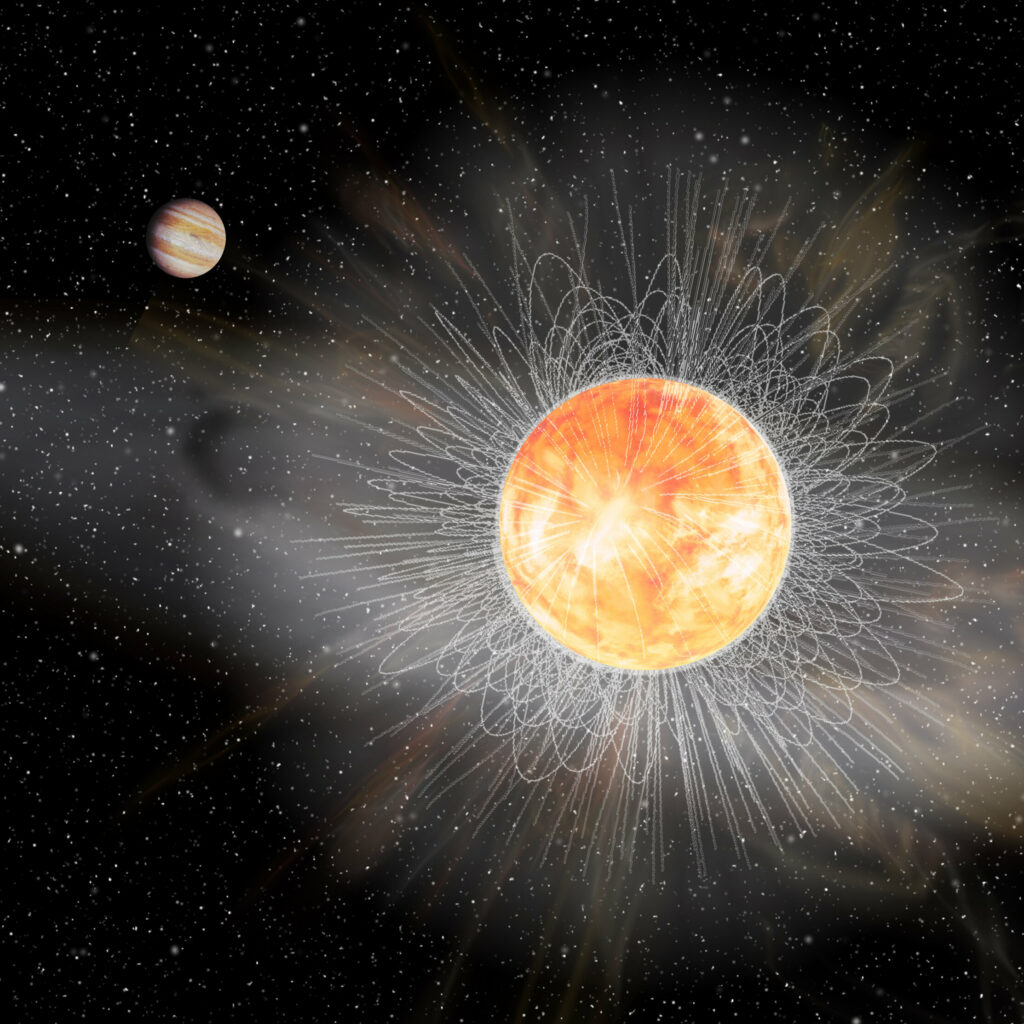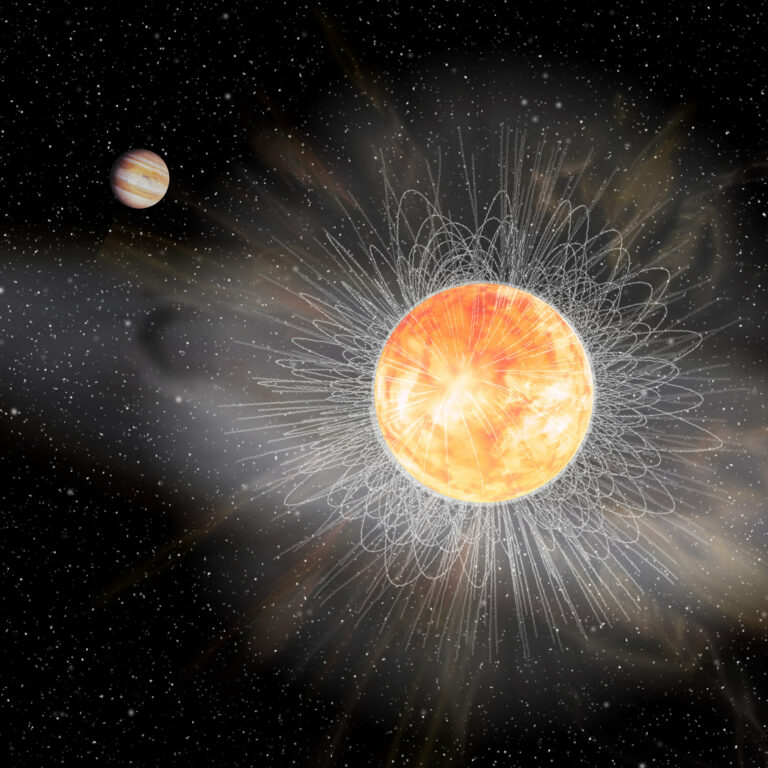Ancient Stars: Optimal Targets in the Quest for Life Beyond Earth
In the past, scientists believed that stars experience an everlasting magnetic brake, leading to a perpetual decrease in their rotation. However, with the aid of advanced techniques and fresh observations, they have delved into the enigmatic magnetic secrets of stars and discovered that their behavior is not as anticipated. Surprisingly, it appears that stars entering their midlife crisis and beyond might serve as cosmic hotspots for the potential discovery of extraterrestrial neighbors.

This groundbreaking study not only sheds light on magnetic phenomena but also provides insights into habitable environments. Consequently, it has been published in The Astrophysical Journal Letters, signifying its significance within the scientific community.
Back in 1995, Swiss astronomers Michael Mayor and Didier Queloz made a momentous announcement regarding the first-ever detection of a planet outside our solar system. This exoplanet was found orbiting a distant star resembling our sun, known as 51 Pegasi. Since then, the number of exoplanets discovered has exceeded 5,500, all of which orbit stars within our galaxy. In recognition of their pioneering work, Mayor and Queloz were jointly awarded the Nobel Prize in Physics in 2019.
This week, an international team of astronomers has released new observations pertaining to 51 Pegasi. These findings suggest that the current magnetic environment surrounding the star may be exceptionally conducive to the development of complex life forms.
Stars similar to our sun are initially born with rapid rotation, resulting in the creation of a powerful magnetic field. This magnetic field can erupt violently, bombarding their planetary systems with charged particles and harmful radiation. Over billions of years, the star’s rotation gradually slows down as its magnetic field interacts with a wind emanating from its surface. This process, known as magnetic braking, leads to a weaker magnetic field as the rotation decelerates. Both the rotation and the magnetic field continue to decline, with each factor influencing the other.
Until recently, astronomers had assumed that magnetic braking persists indefinitely. However, new observations have emerged, challenging this long-held assumption.
Travis Metcalfe, the team leader at White Dwarf Research Corporation in Golden, Colorado, U.S., states that they are revolutionizing the content of textbooks regarding the changes in rotation and magnetism in older stars such as the sun beyond the midpoint of their lifetimes. He emphasizes the significance of their findings for stars with planetary systems and their potential for the development of advanced civilizations.
Klaus Strassmeier, the director at the Leibniz-Institute for Astrophysics in Potsdam, Germany, and a co-author of the study, further explains that this is due to the fact that weakened magnetic braking also reduces the intensity of the stellar wind, consequently decreasing the likelihood of destructive eruptive events.
To conduct their research, the team of astronomers from the United States and Europe combined data from NASA’s Transiting Exoplanet Survey Satellite (TESS) on 51 Pegasi with advanced measurements of its magnetic field obtained from the Large Binocular Telescope (LBT) in Arizona, utilizing the Potsdam Echelle Polarimetric and Spectroscopic Instrument (PEPSI).

Despite not transiting in front of its parent star from Earth’s perspective, the exoplanet orbiting 51 Pegasi exhibits subtle variations in brightness as observed by TESS. These variations can be utilized through asteroseismology to determine the radius, mass, and age of the star. Simultaneously, the star’s magnetic field imparts a minute degree of polarization on the starlight, enabling PEPSI on the LBT to generate a magnetic map of the star’s surface during its rotation, a technique known as Zeeman-Doppler Imaging. By combining these measurements, the team was able to assess the current magnetic environment surrounding the star.
Previous findings from NASA’s Kepler space telescope hinted at a potential decline in magnetic braking beyond the age of the sun, indicating a weakening connection between rotation and magnetism in older stars. However, these conclusions were based on indirect evidence, relying on rotation rate measurements across a wide range of star ages. It was evident that rotation ceased to slow down around the age of the sun (4.5 billion years), and the diminished magnetic braking in older stars could account for this behavior.
Nevertheless, only direct measurements of a star’s magnetic field can establish the underlying causes, and the targets observed by Kepler were too faint for LBT observations. The TESS mission, on the other hand, commenced data collection in 2018, similar to Kepler but focusing on the nearest and brightest stars in the sky, including 51 Pegasi.
Over the past few years, the team has employed PEPSI on the LBT to measure the magnetic fields of various TESS targets, gradually enhancing our comprehension of how magnetism evolves in stars like the sun as they age. These observations have unveiled a sudden change in magnetic braking in stars slightly younger than the sun, with a more than tenfold decrease in strength at that point. This weakening trend persists as the stars continue to mature.
The unexpected shift in the strength and complexity of the magnetic field, along with its influence on the stellar wind, was attributed by the team as the cause for these changes. The properties of 51 Pegasi, as newly measured, indicate that it has already undergone a similar transition to weakened magnetic braking, just like our own sun. This discovery has provided a fresh perspective on the planetary system and holds great significance in the field of exoplanet astronomy, as stated by Strassmeier, the principal investigator of the PEPSI spectrograph. This research marks a significant advancement in the quest for extraterrestrial life within our galaxy.
The transition of life from the oceans to land in our solar system occurred millions of years ago, coinciding with the weakening of magnetic braking in the sun. Young stars pose challenges to the development of complex life due to the radiation and charged particles they emit, whereas older stars offer a more stable environment. The team’s findings suggest that the most promising locations to search for life beyond our solar system are around middle-aged and older stars, according to Metcalfe.
Do not forget to share your opinion with us to provide you with the best posts !




0 Comments